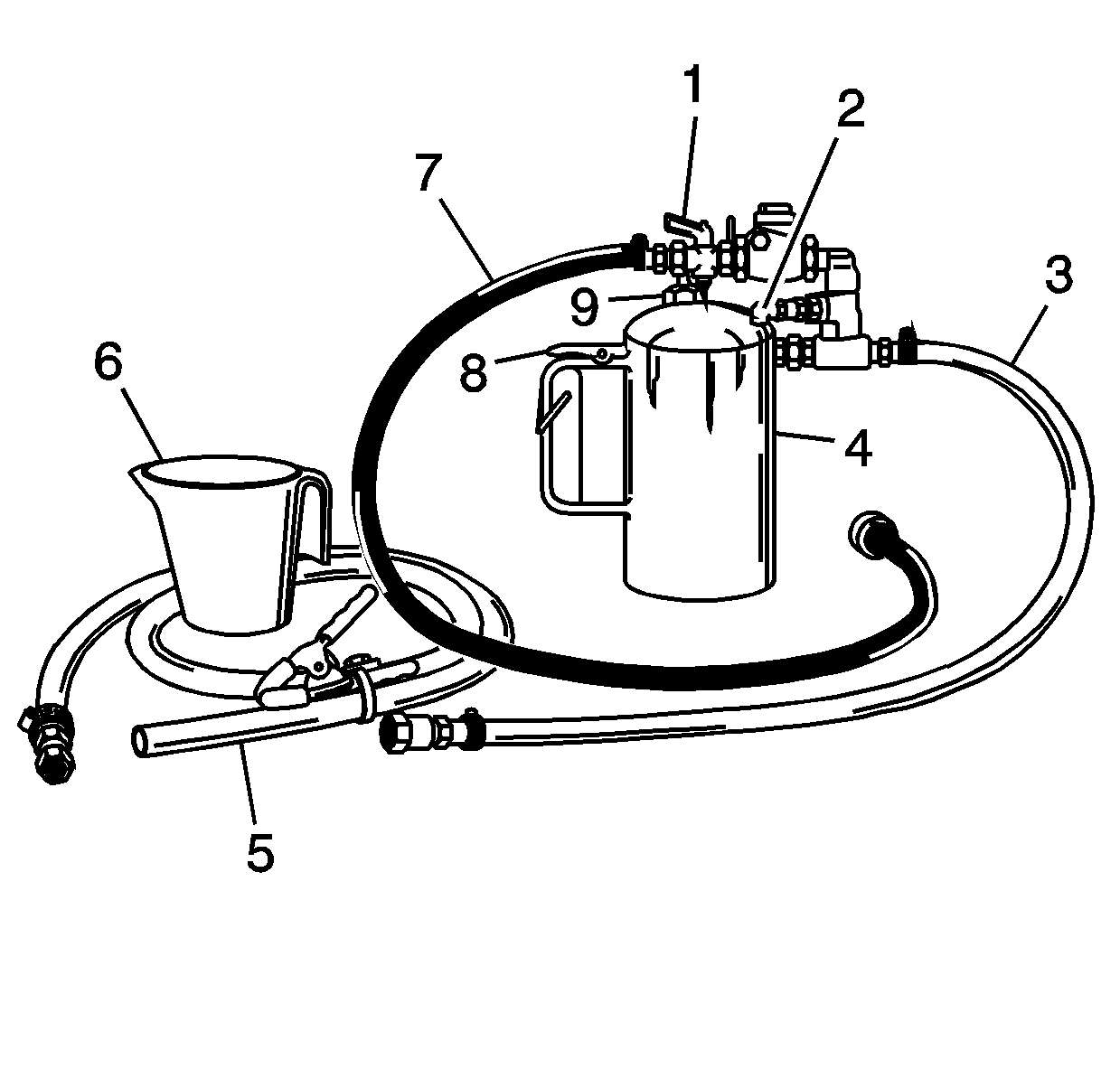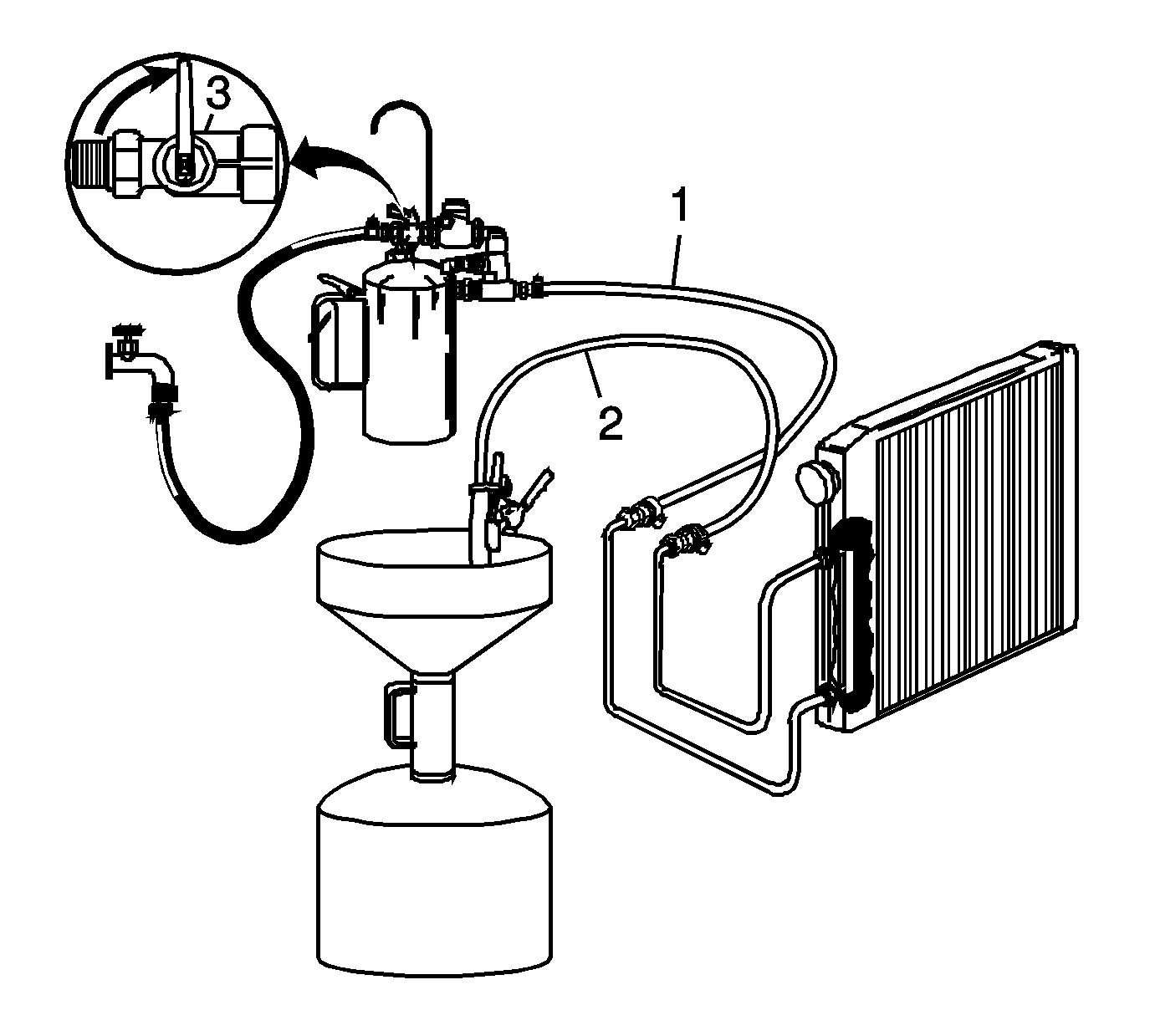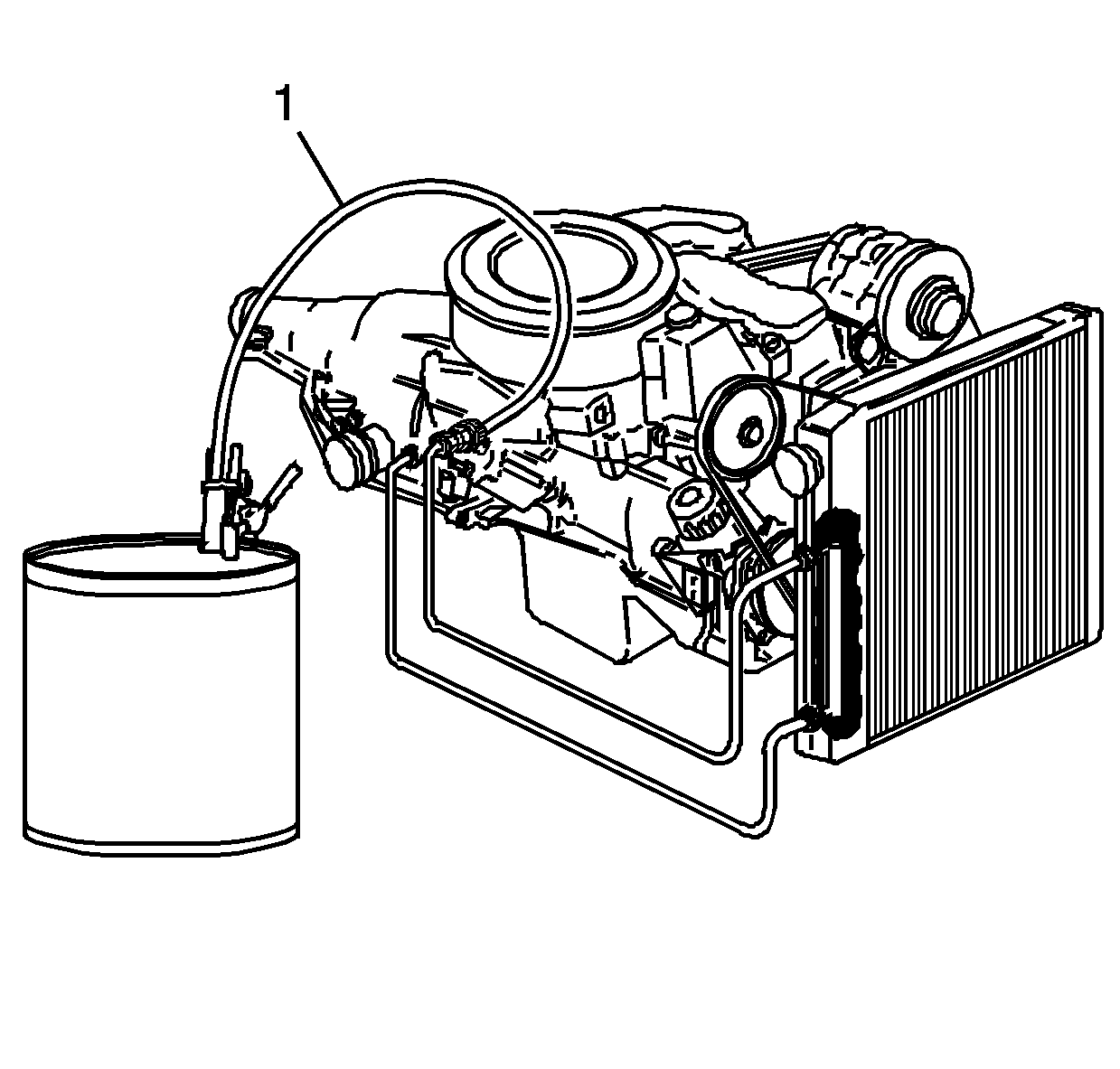GM studies indicate that plugged or restricted transmission oil coolers and line cause insufficient transmission lubrication and elevated operating temperatures which can lead to premature transmission wear-out. Many repeat repair cases could have been
prevented by following published procedures for transmission oil cooler flushing and flow checking. This procedure includes flow checking and flushing the auxiliary transmission oil cooler, if equipped.
Important : Use the
SA9165T
or equivalent to flush the transmission oil cooler and the oil cooler line whenever the transmission is removed for the following repairs:
| • | transmission overhaul complete |
| • | transmission assembly replacement |
Use the appropriate transmission fluid when performing a transmission repair. Only GM Goodwrench DEXRON®VI automatic transmission fluid should be used when doing a repair on a six (6) speed GM transmission.
Time allowance for performing the cooler flow checking and flushing procedure has been included in the appropriate labor time guide operations since the 1987 model year. The service procedure steps for oil cooler flushing are as follows:
Cooler Flow Check and Flushing Steps
- Tools Required
- Preparation
- Back Flush
- Forward Flush
- Flow Check
- Clean-up
Tools Required
| • | DT-48312
Transmission Cooler Flushing Adapter |
| • | Water supply - hot water recommended |
| • | Water hose, at least 16 mm (5/8 in) ID |
| • | Shop air supply with water/oil filters, regulator and pressure gage |
| • | Air chuck with clip, if available |
| • | Pail with lid - 19 L (5 gallon) |
Preparation
- During the installation of the repaired or replacement transmission, do not connect the oil cooler lines.

Notice: Do not use solutions that contain alcohol or glycol.
Use of solutions that contain alcohol or glycol may damage the oil cooler line flusher,
oil cooler components and/or transmission components.
Important: The
J 35944-22
is environmentally safe, yet powerful enough to cut through transmission fluid to dislodge any contaminants from the cooler. The safety precautions on
the label, regarding potential skin and eye irritations associated with prolonged exposure, are typical precautions that apply to many similar cleaning solutions. It should be noted that according to GM, use of other non-approved fluids for cooler flushing
can have an adverse reaction to the seals inside the transmission.
- Remove the fill cap (9) on the
SA9165T
and fill the flusher tank (4) with 0.6 L (20-21 oz) of
J 35944-22
, using the
measuring cup (6). Do not overfill.
- Install the fill cap (9) on the
SA9165T
and pressurize the flusher tank (4) to 550-700 kPa (80-100 psi), using the shop air supply at the tank air valve (2).
- With the water supply valve (1) on the
SA9165T
in the OFF position, connect the water supply hose from the
SA9165T
to the water supply
at the faucet.
- Turn ON the water supply at the faucet.
Back Flush

Important: Inspect the transmission oil cooler lines for kinks or damage. Repair as necessary.
- Connect the
SA9165T
to the oil cooler feed line. Use the
DT-48312
.
- Clip the discharge hose (2) onto the oil drain container.
- Attach the
SA9165T
to the undercarriage of the vehicle with the hook provided and connect the flushing system feed supply hose (1) from the
SA9165T
to the oil cooler return line. Use the
DT-48312
.
- Turn the
SA9165T
water supply valve (3) to the ON position and allow water to flow through the oil cooler and lines for 10 seconds to remove any remaining transmission fluid. If water
does not flow through the oil cooler and lines, the cause of the blockage must be diagnosed and the plugged component must be repaired or replaced. Continue with the cooler flushing and flow check procedure once the blockage is corrected.
- Turn the
SA9165T
water supply valve (3) to the OFF position and clip the discharge hose onto a 19 liter (5 gallon) pail with a lid, to avoid splashback.

Important: Flushing for approximately 2 minutes in each cooler line direction will result in a total of about 8-10 gallons of waste fluid. This mixture of water and flushing fluid is to be captured in a bucket
or similar container.
- Turn the
SA9165T
water supply valve (3) to the ON position and depress the trigger (1) to mix cooler flushing solution into the water flow. Use the clip provided on the handle to hold the
trigger (1) down. The discharge will foam vigorously when the solution is introduced into the water stream.
- Flush the oil cooler and lines with water and solution for 2 minutes. During this flush, attach the shop air supply 550-700 kPa (80-100 psi) to the flushing system feed air valve (2) located on the
SA9165T
, for 3-5 seconds at the end of every 15-20 second interval to create a surging action.
- Release the trigger (1) and turn the
SA9165T
water supply valve (3) to the OFF position.
Forward Flush

- Disconnect both hoses (1 and 2) from the oil cooler lines and connect them
to the opposite oil cooler line. This will allow the oil cooler and lines to be flushed in the normal flow direction.
- Repeat Step 6 and 7 of the Back Flush.

- Release the trigger (1) of the
SA9165T
and allow water only to rinse
the oil cooler and lines for 1 minute.
- Turn the
SA9165T
water supply valve (3) to the OFF position and turn OFF the water supply at the faucet.
- Attach the shop air supply to the flushing system feed air valve (2) on the
SA9165T
and blow out the water from the oil cooler and lines. Continue, until no water comes out of the discharge
hose.
Flow Test

Important: The Flow Test must be performed after the flush to ensure that all flushing solution and water is removed from the oil cooling system. Corrosion of the oil cooler will occur if water and flushing solution remain in the
oil cooling system.
- Disconnect the hose from the oil cooler line. Connect the oil cooler feed line to the transmission for normal flow.
- Clip the discharge hose (1) to an empty oil container.
- Confirm the transmission is filled with automatic transmission fluid. Refer to
Fluid Capacity Specifications
for the correct automatic transmission fluid capacity.
- Start the engine with the transmission in PARK range and run for 30 seconds after fluid begins to flow from the discharge hose (1). A minimum of 1.9 L (2 quarts) must be discharged during this 30 second run time.
- If the fluid flow meets or exceeds 1.9 L (2 quarts) in 30 seconds, connect the oil cooler return line to the transmission.
- If fluid flow is less than 1.9 L (2 qt) in 30 seconds, perform the following diagnosis:
| 6.1. | Disconnect the
SA9165T
discharge hose (1) from the oil cooler return line. |
| 6.2. | Disconnect the oil cooler feed line at the radiator. |
| 6.3. | Connect the
SA9165T
discharge hose (1) to the oil cooler feed line, radiator end. |
| 6.4. | Clip the discharge hose (1) onto the oil drain container. |
| 6.5. | Start the engine with the transmission in PARK range and run for 30 seconds after fluid begins to flow from the discharge hose (1). A minimum of 1.9 L (2 qt) must be discharged during this 30 second run time. |
- If the amount of transmission fluid flow remains less than 1.9 L (2 qt) in 30 seconds, inspect the oil cooler feed line for restrictions or damage. If no condition is found with the feed pipe, inspect the transmission.
Clean-up
- Disconnect the water supply hose from the
SA9165T
and bleed any remaining air pressure from the flusher tank.
- Remove the fill cap from the
SA9165T
and return any unused flushing solution to its container. Rinse the
SA9165T
with water. Do not store the
SA9165T
with flushing solution in it.
- After every third use, clean the
SA9165T
as described in the instructions included with the tool.
- Dispose of any waste water/solution and transmission fluid in accordance with local regulations.






